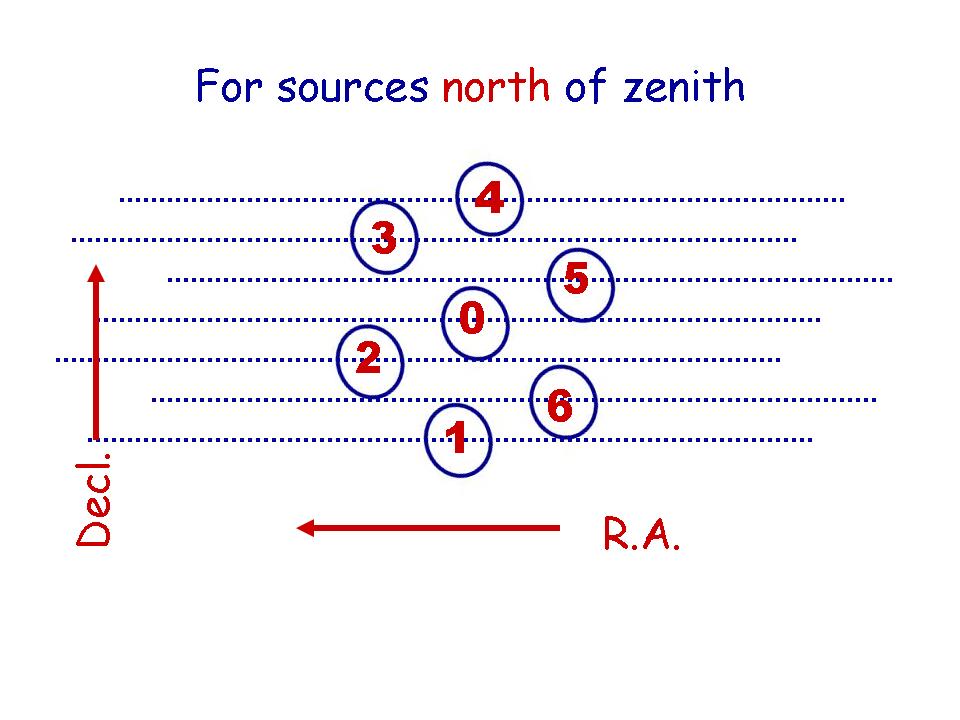|
The seven beams of
ALFA sweep across seven parallel tracks of sky. We
rotate the array
by 19 degrees so that the beams tracks follow lines of constant
declination, each offset from the other by 2.1 arcminutes. Beam 0, which is
more sensitive (has higher gain) than the others remains at the center of the
array.
Opposite sides of the sky, north and south of the Arecibo
zenith, must be observed with the azimuth arm set either south or north
of zenith (remember there is a reflection involved!). Since the center of
the array is fixed in position and the rotation of the array is performed
relative to the azimuth arm, a single rotation angle will configure
the beam layout differently north and south of zenith. For example,
for 19 deg rotation angle, beam 4 will always be at higher zenith angle.
In the northern part of the sky, that means it will sweep out a higher
(more northerly) declination, but in the southern part of the
sky, a lower (more southerly) one.
Hence the resultant layout of beams 1-6 on the sky differs depending
on whether the source is north or south of +18d21'.
Notice that the different beams detect radiation from points at
the same right ascension at different times.
In fact, if we did not move the telescope at all,
the beams would sweep through tracks in current epoch Declination
(according to the date of each observing run). We want to be
sure that our final map is constructed from parallel tracks, so
we need to make sure that the beams drift across the sky according
to constant declination in J2000 (the epoch of 1 January 2000,
a standard in astronomy today). We thus apply a small adjustment to
the telescope zenith angle every few minutes; see the discussion
of this issue here.
Here are some exercises to test your understanding.
|


|



